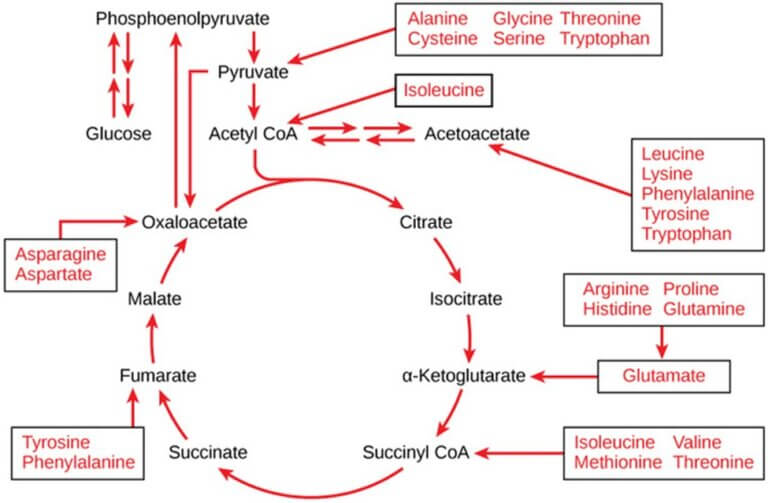Written by Andrew Akhaphong, MS, RD, LD, Mackenthun’s Fine Foods Registered Dietitian
Published 12/08/2023
According to a survey conducted in 2022 by Forbes Health/OnePoll on 1,005 adults in the United States, the top New Year’s Resolutions are improving mental health (45%), improving fitness (39%), achieve weight loss (37%) and improving diet (33%). (1) In 2023 going into the new year, it is predicted these goals will continue to rank the top as New Year’s Resolutions along with improving financial stability.

Additionally, results from the 2020 Urban Plates/Ipsos on New Year’s Resolutions on 1,005 adults in the United States reports the length of time New Year’s Resolutions are followed through is 11% for less than a month, 19% for at least a month, 14% for at least three months, and 11% for at least six months. (2) In a 2017 survey by Virta Health of 1,129 adults in the United States investigating successes in achieving New Year’s Resolutions reported 54% failed in changing their eating habits, and 41% failed in achieving weight loss. (3)
Michelle May of “Am I Hungry” identified two reasons why New Year’s Resolutions fail – (4)
1. “You lack a guiding intention” from all facets of achieving the New Year’s Resolutions (ie. achieving weight loss and then being able to maintain the weight without gaining it back).
2. “You don’t address your biggest hurdle” which are your thought patterns.
In an opinion editorial by Elizabeth Roper Marcus in Psychology Today, she outlined three key points (regarding weight loss) that people need to remember – (5)
1. “Resolutions for quick weight loss fail not because we are weak, but because our bodies and minds conspire against it”.
2. “Successful weight loss is not about willpower, but about changing habits”.
3. “To change habits, it’s essential to avoid deprivation, remove triggers, and add pleasure”.
For this article, we will be exploring weight loss and the ketogenic (keto) diet. I attended a webinar in October 2023 hosted by Guiding Stars to which they report that the keto diet will continue to be one of the top consumer interests.
The Keto Diet’s History
The ketogenic diet became mainstream in 2013 after Peter Attia provided a TED talk on this subject; since then, media and influencers haven taken the ketogenic diet as a new to improve one’s body composition. With this interest came with changes in eating patterns; thus, requiring food companies to change and/or develop new products to meet the ketogenic community needs.


In 1915, Dr. John Howland of John’s Hopkins Children’s Center received a grant from his brother Charles, for the hospital’s first laboratory, to allow Dr. Howland to study the effects of fasting in reducing pediatric epileptic episodes. (6)
In 1921, it wasn’t until Dr. Russell Wilder of the Mayo Clinic, first used the term, “ketogenic diet” for describing a nutritional treatment for pediatric epilepsy. This was identified as a 70-90% caloric diet from fat and very restricted protein and carbs. (6) In 1993, the first child was successfully treated with the ketogenic diet and ceased all episodes of pediatric epilepsy thereafter. (6) In 2003, Dr. Eric Kossof wrote the first edition of his book, Ketogenic Diets: Treatments for Epilepsy and Other Disorders. In this book, Dr. Kossoff presented a modified version of the Atkin’s Diet which today, is currently known as the “keto diet” we all use for weight loss. (6) Additionally, Dr. Kossoff reported in his book that the pediatric children who were treated with the modified Atkin’s Diet exhibited weight loss; therefore, future readers of this book took it as a way for them to achieve weight loss even though it was meant for the treatment of epilepsy.
How Does the Modified Atkin’s Diet, or the Modern “Keto Diet” Work?
The purpose of the keto diet is to transform an individual’s metabolic state into ketosis; this is when a person’s body is using fat as fuel to produce energy instead of carbs.

The diagram depicted above explains how ketosis happens. As one can see, metabolism is very complex and is not an easy task to influence how metabolism changes!
It is a common misconception that only carbs turn into glucose (sugar), but protein can too!

In this diagram above, the highlighted terms in red signify the different proteins that go into metabolism and turn into glucose (sugar).
Today’s keto diet focus on limiting carbs between 20 – 50 grams per day, emphasizing fatty foods (60-80% of your calories), and moderate consumption of protein (15 – 20% of your calories).
This will look like this –
If you eat a 2,000 calorie diet per day…
15% protein calories x 2,000 calories = 300 calories of protein per day
300 calories of protein / 4 grams of protein = 75 grams of protein per day
75% fat calories x 2,000 calories = 1,500 fat calories per day
1,500 fat calories / 9 grams of fat = 167 grams of fat per day
Of course, there are many types of keto diet, but for the purpose of this article we will keep it basic.
For more information on how to do a keto diet, please visit this resource below provided by Metagenics. Please note that we are not endorsing Metagenics and just providing you, the reader, with a resource to understand the keto diet further. What this article will do is examine the research of weight loss further than what is provided in their resource.
https://www.metagenics.com/mas_assets/media/metagenics/pdf/MET2487_Ketogenic_Program_Guide_IPAD.pdf
Does it Work?
A systematic review published in 2018 reported that women lost on average 4 pounds more on the keto diet compared to a general low-fat diet in one year; however, it is important to note that the study reviewed had a dropout rate of 84% (initial sample population = 1577, final sample population = 252). (7) Therefore, it is not the best representation as many people did not complete their participation in the study. The study did not specify if there was a balance between the healthy fats (polyunsaturated fats and monounsaturated fats) and the bad fats (saturated fats).
A prospective study in 2004 examined 84 obese persons with high blood sugar and cholesterol levels. They followed a keto diet for 24 weeks which resulted in improved levels across the board. At the 24-week mark, participants lost an average of 30 pounds. It is important to note that the researchers specified the fat sources which consisted of the healthy fats (polyunsaturated fats and monounsaturated fats) and reduced bad fats (saturated fat). (8) Additionally, it was a small sample size which is not a strong reflection of a larger population.
Does it Not Work?
A systematic review published in 2021 reported the hunger hormone, ghrelin, increases during calorie-restricted weight loss; the body increases this hormone as our metabolism believes it is in starvation mode. (9) Several studies it reviewed state that the production of ghrelin slows down under the keto diet. When typical consumption of carbohydrates are reintroduced after stopping the keto diet, ghrelin increases, leading to weight regain. (9)
A previous systematic review from 2019 also stated that after six months of doing the keto diet, weight plateaus due to adaptation. Much of the weight loss reported, when measuring body composition (muscle, bone, fat, and water) is a result of water loss. When
A systematic review published in 2021 reported that “the keto diet could be beneficial towards the management of obesity”. The problem is many of the studies reviewed had small population samples due to high dropout rates, a lack of control group, short intervention time while on the keto diet with no follow-ups on after-effects, and the studies investigated low-calorie keto diet. Therefore, weight loss was likely achieved because of calorie restriction and not ketosis itself. Additionally, the studies did not specify what foods were recommended for their keto diet plan to provide consistency for the studies.
Side note –
A control group is defined as a sample population that are given a standard intervention for the experiment to be compared to. In this case, the experiment group are those who followed the low-calorie keto diet while the control group would have been the “standard diet”.
Why Do I Gain My Weight Back?

Jessica Migala and registered dietitian Kayli Anderson of EverydayHealth explains why persons tend to gain weight after stopping their keto diet.
The keto diet is a very restrictive lifestyle and is not sustainable long-term for most people. As persons transition back to their dietary pattern after finishing keto, they eat more carbohydrates, overeat their calories for the day, or do not do enough exercise. (10) Per 1 gram of carb we eat and retain in our body, we retain 4 grams of water in our muscle. Again, this is why most of the weight loss in the first two-weeks or so of following the keto diet is water! Registered dietitian Alyssa Tucci, nutrition manager for Virtual Health Partners, recommends to continue to not eat refined grains and sugars while focusing on decreasing fat intake and increasing protein, vegetable, and whole grains. (10)
Side note – whole grains like oatmeal, brown rice, quinoa, bulgur wheat, and amaranth are slow digesting carbs. They have something intact called the bran which coats the outside of the grain, which is removed when refining carbs. This acts as both a soluble fiber (sponge effect to absorb excess fat and carbs in the gut to poop out) and insoluble fiber (barrier that coats the gut to reduce absorption of excess fat and carbs).
Verdict
From the information that is presented in this blog for weight loss on the keto diet, the key takeaways are –
1. Follow the keto diet long-term to maintain the results
2. Follow a low-calorie, low fat, low carb, high protein and fiber diet to support weight maintenance after finishing the keto diet
3. Exercise
As always, please consult with a registered dietitian and your primary care provider before starting any new diet regimen.
Scientific References:
- https://www.forbes.com/health/mind/new-years-resolutions-survey/
- https://www.ipsos.com/en-us/urban-plates-ipsos-NY-Resolutions
- https://www.virtahealth.com/blog/new-years-resolutions-fail-how-to-succeed
- https://amihungry.com/articles/why-a-new-years-resolution-to-lose-weight-doesnt-work
- https://www.psychologytoday.com/us/blog/heartstrings/202201/did-your-weight-loss-resolution-fail-heres-easier-way
- https://www.hopkinsmedicine.org/neurology-neurosurgery/specialty-areas/epilepsy/keto-diet-timeline
- https://www.ncbi.nlm.nih.gov/pmc/articles/PMC6371871/
- https://www.ncbi.nlm.nih.gov/pmc/articles/PMC2716748/
- https://journals.lww.com/co-clinicalnutrition/fulltext/2021/07000/ketogenic_diets_and_appetite_regulation.14.aspx
- https://www.everydayhealth.com/ketogenic-diet/how-keep-weight-off-after-keto-diet/


